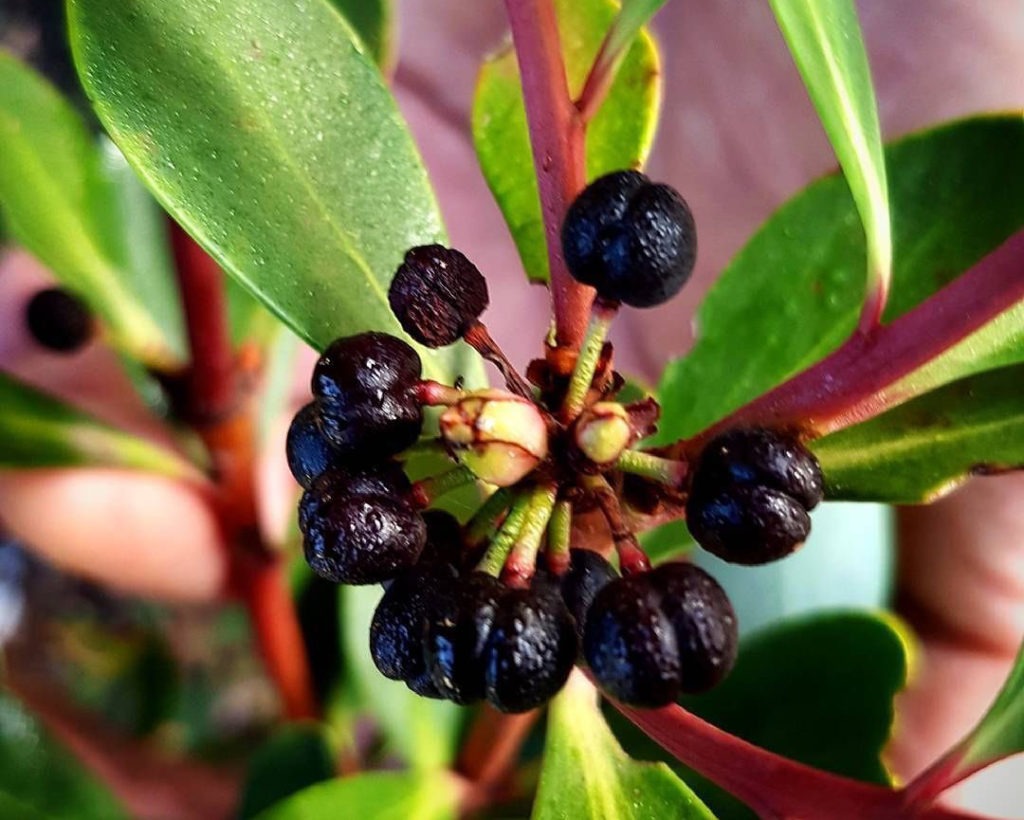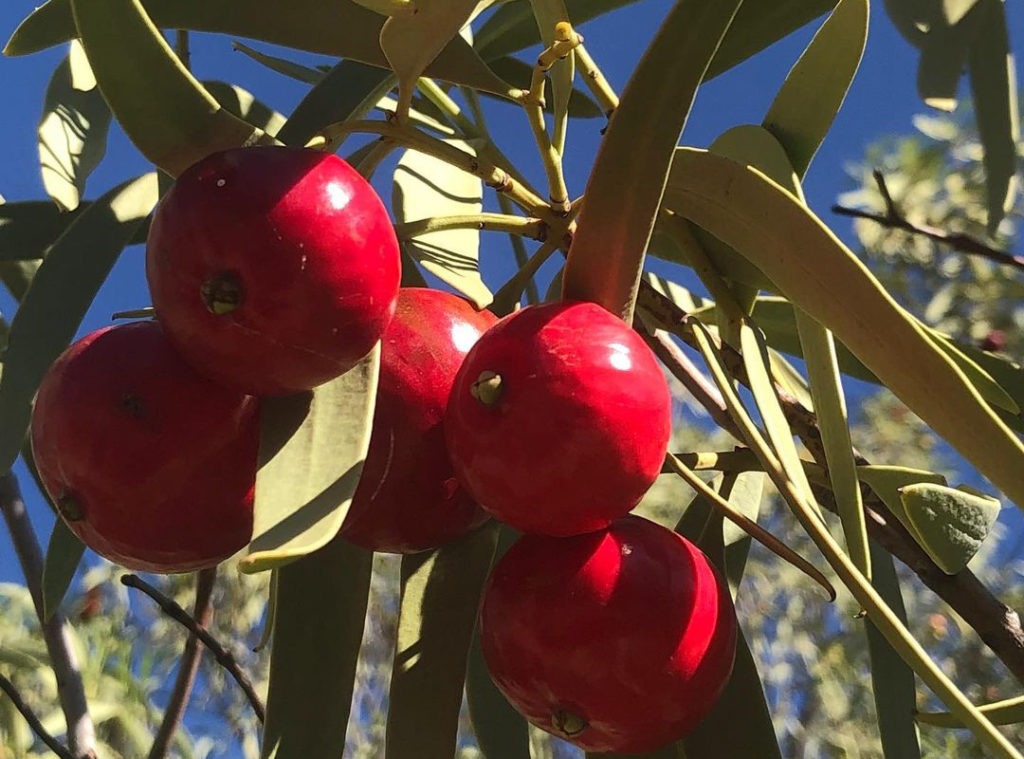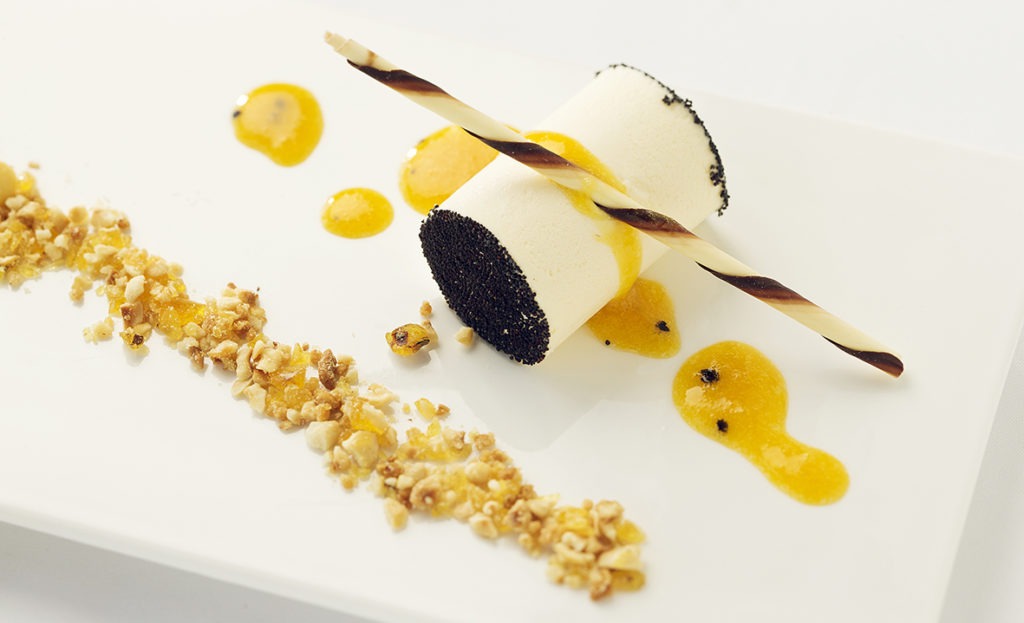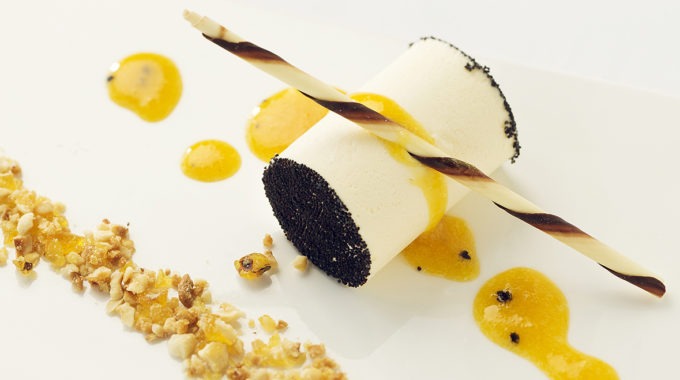Native ingredients: dessert showstopper
The popularity of Australian native ingredients continues to grow, with top restaurants, food products, drinks and even MasterChef contestants now using our delicious bush foods. But what about us home cooks? Introducing native ingredients into your home cooking can open up a whole new world of flavours that you simply can’t find anywhere else. And if you ensure you’re buying your ingredients from an Indigenous-owned enterprise, you’ll also be helping to build a more equitable Australian bush food industry.
But where to begin? Tom Milligan, Le Corden Bleu’s Australian Technical Director, has provided us with a list of native Australian pantry staples that you can swap out with commonly used ingredients to give your next meal a distinctly Aussie accent. He’s also shared the recipe for a restaurant-level cheesecake dessert using native ingredients that will challenge your culinary skills and amaze anyone you serve it up to.

Must-have native pantry staples
Pepperberries (dried)
Pepperberries are more versatile than conventional peppercorn and can be used in both sweet and savoury dishes.
Aniseed myrtle (powder)
This has a subtle, sweet liquorice flavour. Great with fish, steamed rice, seafood, biscuits and ice cream, and makes a beautifully refreshing tea.
Cinnamon myrtle (powder)
This can be used in savoury recipes, stews and curries, rice dishes such as pilaf, herbal teas and in biscuits, sweets, desserts and slices – anywhere cinnamon is used.

Wattleseed (roasted ground)
This Is one of the most versatile ingredients to have in your pantry. It can be used in baking, flavouring casseroles, to thicken sauces or to add to ice cream, chocolate or any other desserts and sweet treats. When roasted, wattleseed has the most delightful aroma of nutty, fresh-roasted coffee and can be used as a coffee substitute in cooking.
Finger lime (fresh, frozen or dried)
Also known as caviar lime, this is an exquisite rainforest fruit. Finger limes can be used in many ways – salads, seafood, pasta, curry, sushi, sashimi, desserts and even cocktails.

Quandong (frozen or dry)
Also known as native peach or desert peach, the flesh is sweet and tangy, reminiscent of peaches and rhubarb, and the aroma is warm, fruity and earthy. Quandongs can be used in a similar way to rhubarb – poached to make compotes, used in pie fillings, jams and preserves or as a flavouring in sauces, desserts and ice creams.
Lemon aspen (powder)
This has a wonderfully tart lemon taste with a hint of grapefruit and can be used in any application where you’d normally use regular citrus. For example, as a lemon aspen meringue pie or in a decadent cheesecake (as in the recipe below).

Lemon aspen and leatherwood honey cheesecake
This beautifully-presented dessert comes with a yellow peach and rosella syrup coulis and a macadamia nut nougatine. It serves 8 lucky people.
You’ll need:
For the cheesecake:
5 egg yolks
200g leatherwood honey
125ml water
1 litre thickened cream (whipped to soft peaks)
500g organic quark cheese (cream cheese is okay, too)
15g leaf gelatine
200ml honey syrup (equal parts honey and water)
1 level dessert spoon lemon aspen powder
For the macadamia nut nougatine:
100g whole roasted macadamia nuts
200g leatherwood honey
50g unsalted butter
For the yellow peach and rosella coulis:
100g yellow peach purée
100g leatherwood honey
5ml rosella extract
Poppy seeds and chocolate swirl sticks for assembly

Method:
1. Combine the leatherwood honey and lemon aspen with the water and warm on the stove until the honey and lemon aspen have dissolved.
2. While still warm, combine the liquid with the egg yolks and whisk, using an electric mixer on a high speed, until the egg yolks double in volume and form a sauce.
3. Dissolve the gelatine in the honey syrup and mix the warm gelatine through the sauce.
4. Soften the quark and combine the cheese with the sauce in three stages. For the first third, combine thoroughly, then fold through the second and third.
5. Once combined, fold through whipped cream and flavourings. Note: both the cheese mixture and the whipped cream should be of similar consistency when folding.
6. Place in eight separate cylindrical moulds and set in the fridge.
7. To make the nougatine, boil the honey in a thick-bottomed saucepan until it reaches 182 degrees and the honey starts to brown.
8. Add in the roasted macadamia nuts and mix well. Add butter and mix well. Pour out the mixture onto a lightly oiled baking tray and allow to cool.
9. Once cold, smash the nougatine into small pieces and place in an airtight container.10. To make the coulis, boil the peach purée and honey together in a thick-bottomed saucepan for 5 to 7 minutes and remove from the stove.
11. Strain the contents through a fine strainer, add the rosella extract and allow to cool and store until you’re ready to put everything together
12. To assemble, remove the cheesecakes from the moulds and dip each end in poppy seeds. Place each of the cheesecakes onto a presentation plate, garnish with the macadamia nut nougatine, coulis and chocolate swirl, and serve to your astounded guests.









